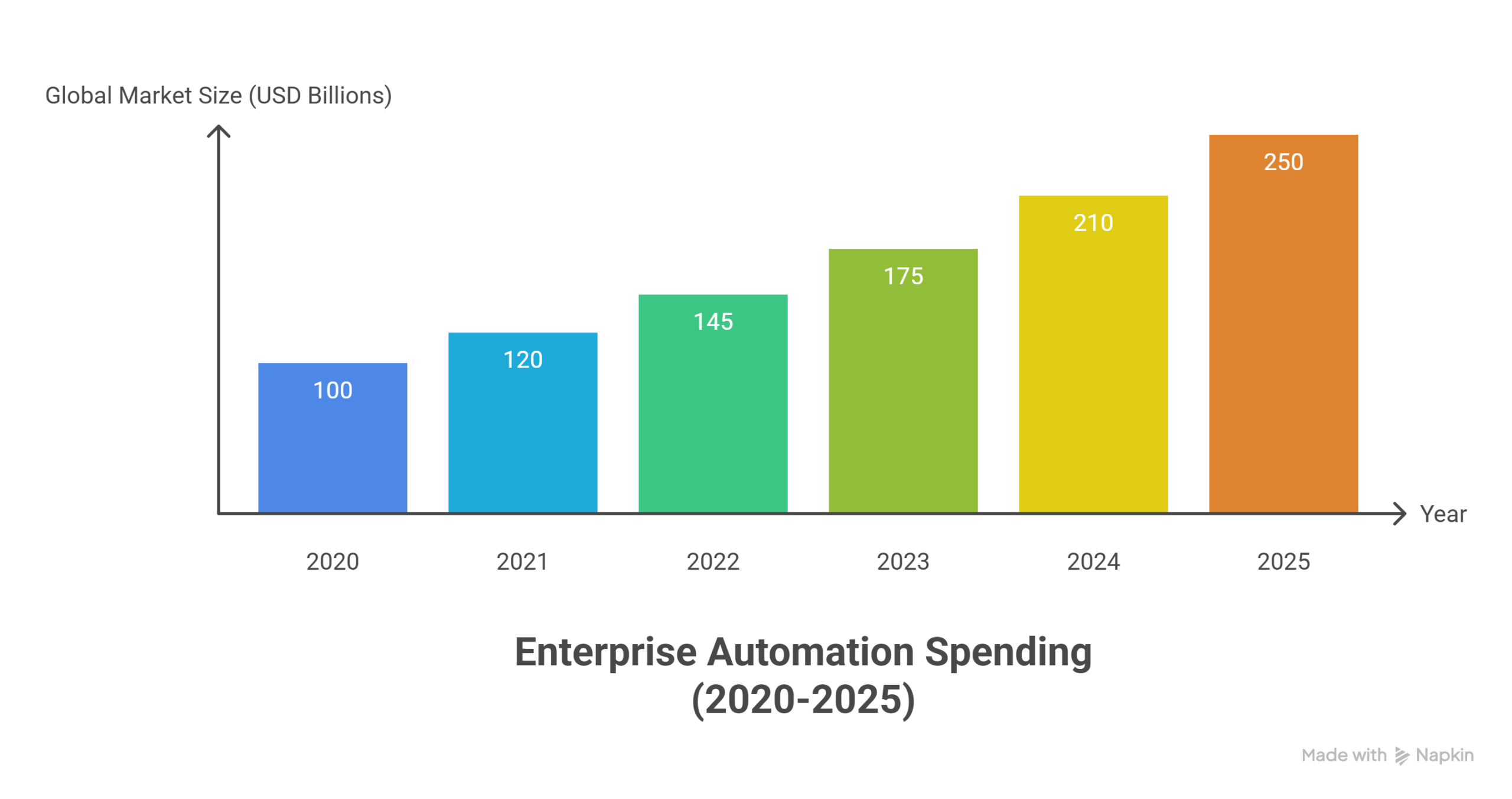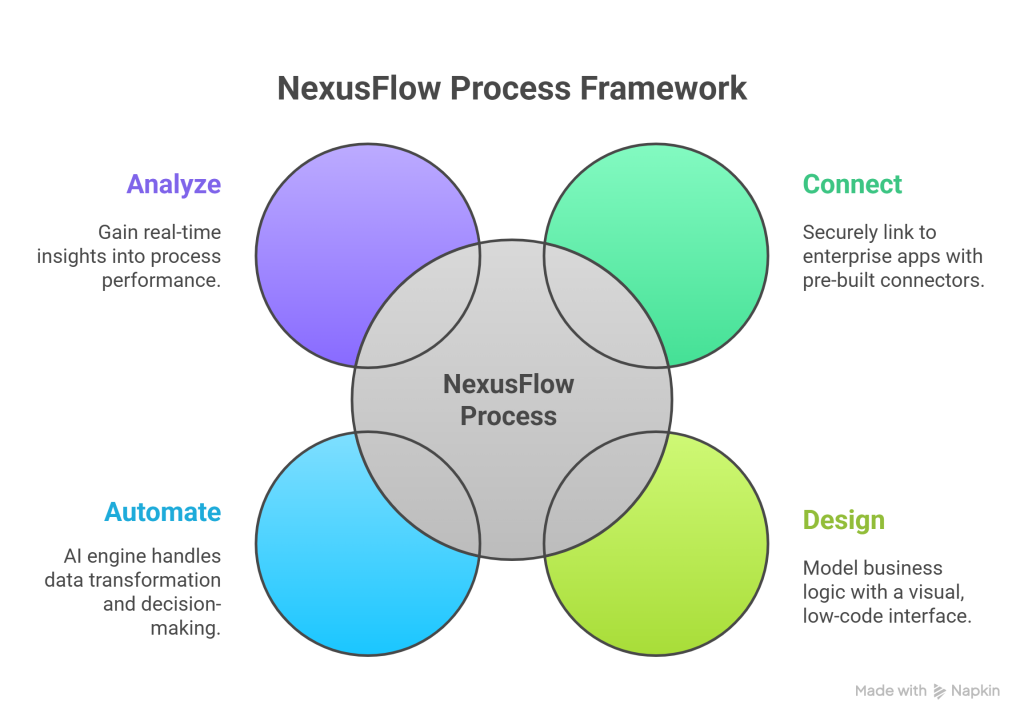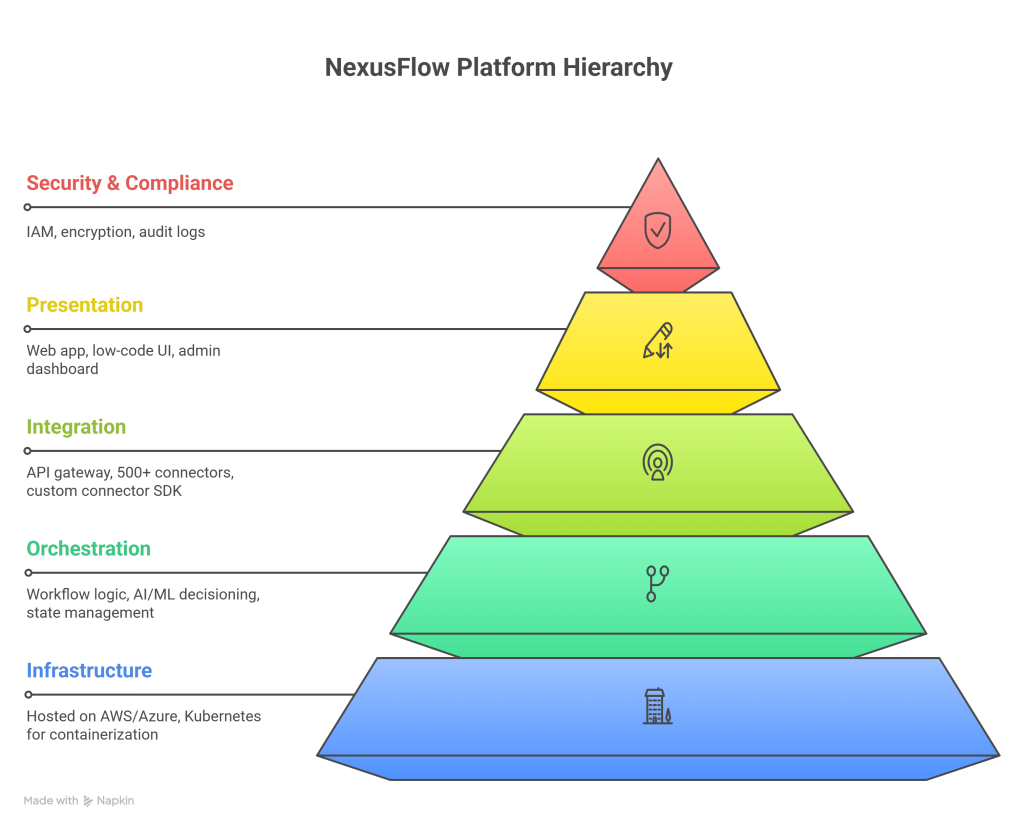The Automation Advantage

Page 1: Cover Page
[CloudNexus Logo]Title: The Automation Advantage: How SaaS Is Accelerating Business Productivity
Subtitle: A Data-Driven Analysis of Intelligent Automation for the Modern Enterprise
Author: CloudNexus Research Labs
Date: October 26, 2023
Page 2: Executive Summary & Table of Contents
Executive Summary
The modern enterprise is at a critical inflection point. Digital transformation is no longer a choice but a necessity for survival and growth. However, despite massive investments in best-of-breed SaaS applications, businesses are struggling with a hidden productivity ceiling. This ceiling is created by operational silos, fragmented data, and the persistence of manual, repetitive tasks that drain resources, stifle innovation, and lead to employee burnout. The cost of this operational drag is staggering, estimated to cost the global economy trillions in lost productivity.
This whitepaper examines the challenges and opportunities in the enterprise automation landscape. It demonstrates how legacy solutions like traditional Robotic Process Automation (RPA) are failing to address the complexity of modern, interconnected workflows. The future belongs to a more intelligent, integrated, and scalable approach.
CloudNexus introduces NexusFlow, an AI-powered SaaS automation platform designed to break down these barriers. By seamlessly connecting disparate systems and orchestrating complex, end-to-end business processes, NexusFlow delivers a clear and measurable automation advantage.
- The Problem: Enterprises lose an average of 20-30% of their revenue each year to inefficient processes. Fragmented workflows across CRM, ERP, and HRIS systems create data errors, compliance risks, and significant delays.
- The Solution: NexusFlow provides a low-code, AI-driven platform with a library of 500+ pre-built connectors. It automates not just tasks, but entire business processes, from procure-to-pay and order-to-cash to employee onboarding.
- The Value Proposition: Our clients typically achieve a 300%+ ROI within the first 18 months by reducing operational costs by up to 40%, accelerating process cycle times by over 60%, and significantly improving data accuracy and employee satisfaction.
This document serves as a guide for CIOs, COOs, and business leaders seeking to unlock the next level of operational excellence and competitive advantage.
Table of Contents
- Introduction: The New Imperative for Operational Agility
- Market Landscape: The Rise and Limitations of Enterprise Automation
- Problem Definition: The Hidden Costs of Process Fragmentation
- Solution Overview: Introducing NexusFlow by CloudNexus
- Technical Deep Dive: Architecture for the Modern Enterprise
- Business Value & ROI: Quantifying the Automation Advantage
- Use Cases in Action: From Finance to Human Resources
- Competitive Differentiation: Beyond Traditional RPA
- Conclusion: Your Roadmap to Intelligent Automation
Page 3: Introduction & Market Landscape
1. Introduction
In today’s hyper-competitive global economy, business agility is paramount. The ability to respond quickly to market shifts, optimize resource allocation, and deliver exceptional customer experiences separates market leaders from laggards. While the adoption of cloud-based SaaS has armed departments with powerful tools, it has inadvertently created a new, complex web of digital silos.
The key challenge is no longer about having the right applications, but about making them work together seamlessly. Manual data transfers, swivel-chair integrations, and brittle, custom-coded scripts are holding businesses back, creating a drag on productivity and innovation.
This whitepaper explores the critical need for a new paradigm of automation—one that is intelligent, scalable, and business-centric. We will dissect the shortcomings of first-generation automation tools and introduce NexusFlow, CloudNexus’s AI-powered SaaS platform designed to orchestrate and optimize the critical business processes that drive enterprise value.
2. Market Landscape: The Rise and Limitations of Enterprise Automation
The drive for efficiency has fueled explosive growth in the automation market. According to Gartner, the global market for hyperautomation-enabling software is projected to reach nearly $860 billion by 2025. This growth is driven by clear business imperatives:
- Economic Pressure: 72% of CFOs are focused on cost reduction through process automation to combat inflation and market uncertainty (Deloitte, 2023).
- Talent Shortages: With skilled labor becoming scarcer, companies are turning to automation to augment their existing workforce, freeing employees for higher-value strategic work.
- Data-Driven Demands: The need for real-time, accurate data for decision-making requires automated data pipelines that eliminate manual entry errors.

However, the path to successful automation is fraught with challenges. Early solutions, particularly traditional RPA, have shown their limitations:
- Brittleness: RPA bots are often screen-scraping tools that break when an application’s UI changes, leading to high maintenance overhead.
- Lack of Scalability: Scaling bot deployments across thousands of processes is complex and expensive, with many initiatives stalling after initial pilots.
- Limited Intelligence: Traditional automation struggles with unstructured data, complex decision-making, and process exceptions, requiring constant human intervention.
A significant gap exists for a solution that combines the power of API-led integration with the intelligence of AI and the accessibility of a low-code platform.
Page 4: Problem Definition & Solution Overview
3. Problem Definition: The Hidden Costs of Process Fragmentation
For a typical enterprise, a single critical business process like “order-to-cash” can involve dozens of manual touchpoints across multiple systems—Salesforce (CRM), NetSuite (ERP), and a separate invoicing platform. This fragmentation creates severe pain points:
- Revenue Leakage & Delays: Invoice reconciliation delays, caused by manual data mismatches between sales orders and fulfillment records, cost enterprises an estimated $300 billion annually in delayed cash flow and disputes (McKinsey Global Institute). A single data entry error can delay a six-figure payment by weeks.
- Excessive Operational Costs: Our internal research indicates that knowledge workers spend up to 40% of their time on repetitive, administrative tasks that could be automated. For a 1,000-person enterprise, this represents over $25 million in wasted salary costs per year.
- Compliance and Security Risks: Manual data handling dramatically increases the risk of human error and security breaches. Transferring sensitive customer or financial data between systems via spreadsheets or email is a direct violation of regulations like GDPR and CCPA, exposing the company to significant fines.
- Poor Employee and Customer Experience: Tedious, unfulfilling work leads to employee burnout and turnover. For customers, process delays result in slow order fulfillment, incorrect billing, and a frustrating overall experience.
4. Solution Overview: Introducing NexusFlow by CloudNexus
NexusFlow is an intelligent automation platform designed to solve these challenges by orchestrating entire business processes, not just isolated tasks. It acts as the central nervous system for your enterprise applications.
How It Works:
At its core, NexusFlow combines the reliability of API-based integration with the flexibility of AI. Users can design, build, and manage complex, multi-step workflows in a visual, low-code interface.

Key Differentiators:
- AI-Powered Decisioning: NexusFlow’s AI engine can interpret unstructured data (like PDFs and emails), identify process bottlenecks, and dynamically route tasks based on business rules.
- Enterprise-Grade Integration: Unlike simple connectors, our platform supports complex data transformations, two-way syncs, and custom logic, ensuring deep integration with core systems like ERP and CRM.
- Unified Governance and Analytics: A central dashboard provides complete visibility and control over all automated processes, ensuring compliance and measuring ROI.
Page 5: Technical Architecture & Business Value
5. Technical Deep Dive: Architecture for the Modern Enterprise
NexusFlow is built on a cloud-native, microservices architecture to deliver the security, scalability, and reliability that enterprises demand.

Key Technical Pillars:
- Security & Compliance: Security is our top priority. The platform is SOC 2 Type II certified, ISO 27001 compliant, and adheres to GDPR and CCPA data privacy principles. All data is encrypted both in transit (TLS 1.2+) and at rest (AES-256).
- Scalability & Performance: Built on a serverless, auto-scaling infrastructure, NexusFlow can handle fluctuating workloads, from a few hundred transactions a day to millions per hour, without manual intervention. We guarantee 99.99% uptime.
- API-First Design: Every function within NexusFlow is exposed via a robust REST API, allowing for deep integration into existing CI/CD pipelines and developer ecosystems. Our connector library includes deep support for SAP, Oracle, Salesforce, Workday, and more.
6. Business Model & Value Proposition
CloudNexus offers a transparent, value-based subscription model. Our pricing is tiered based on the volume of automated process runs and the number of premium connectors required, ensuring that you only pay for the value you receive.
Target Personas & Their Benefits:
- For the CIO: A secure, scalable, and governable platform that reduces technical debt from custom integrations and empowers business users with safe, self-serve automation.
- For the COO: A powerful tool to drive operational excellence, reduce process cycle times, and improve resource utilization across the organization.
- For the CFO: A clear path to ROI by reducing operational costs, minimizing revenue leakage from errors, and ensuring auditable, compliant financial processes.
Quantifiable Business Value (Based on average client results):
| Metric | Impact of NexusFlow |
|---|---|
| Operational Costs | ▼ Up to 40% reduction |
| Process Cycle Time | ▼ Over 60% faster |
| Manual Errors | ▼ 98% elimination |
| Employee Productivity | ▲ 25% increase for affected teams |
| ROI | ▲ Average 310% within 18 months |
Page 6: Use Cases & Competitive Differentiation
7. Use Cases in Action
NexusFlow is a horizontal platform with proven success across industries and departments.
Finance Automation (Procure-to-Pay):
- Problem: Manual purchase order creation, invoice processing, and 3-way matching lead to late payments and missed early-payment discounts.
- NexusFlow Solution: Automatically ingest vendor invoices via email/PDF, use AI to extract data, match it against POs and goods receipts in the ERP system, and route for approval, all without human touch.
- Result: Reduced invoice processing time from days to minutes, capturing 95% of early-payment discounts.
HR Automation (Employee Onboarding):
- Problem: A slow, disjointed onboarding process requiring manual setup across HRIS (Workday), IT (Okta), and Finance (Payroll) systems.
- NexusFlow Solution: A single trigger in the HRIS initiates a workflow that automatically creates user accounts, assigns hardware, enrolls in payroll, and sends welcome materials.
- Result: Reduced time-to-productivity for new hires by 50% and eliminated Day 1 setup errors.
Sales Operations (Lead-to-Revenue):
- Problem: Syncing new customer data from Salesforce to the billing system in NetSuite is manual, causing delays in contract activation and initial invoicing.
- NexusFlow Solution: When a deal is marked “Closed-Won” in Salesforce, NexusFlow instantly creates the customer account in NetSuite, generates the first invoice, and provisions their service access.
- Result: Accelerated revenue recognition by an average of 7 days per new customer.
8. Competitive Differentiation
NexusFlow is uniquely positioned to deliver value beyond what traditional tools can offer.
[Comparison Matrix Table]| Feature | CloudNexus (NexusFlow) | Traditional RPA | Simple Connectors (iPaaS) |
|---|---|---|---|
| Core Technology | API-First with AI | UI / Screen Scraping | API-to-API |
| Scalability | High (Cloud-Native) | Low-Medium (Brittle) | Medium |
| Intelligence | High (AI-driven decisions) | Low (Rule-based) | None |
| Maintenance | Low | High | Low |
| Use Case Focus | End-to-End Processes | Repetitive Tasks | Simple Data Syncs |
| Total Cost of Ownership | Predictable & Lower | High (High Maintenance) | Low (but limited scope) |
Conclusion & Call to Action
The era of isolated applications and manual processes is over. To thrive, enterprises must build a connected, intelligent, and agile operational backbone. Simply buying more SaaS is not the answer; the key is to unlock the collective power of your existing technology stack through intelligent automation.
Traditional tools have proven inadequate for the complexity and scale of modern business. CloudNexus’s NexusFlow platform provides the strategic solution—a secure, scalable, and AI-powered engine to eliminate operational drag, empower your workforce, and deliver a significant, measurable return on investment.
Don’t let process friction define your company’s limits. Embrace the automation advantage.
Ready to unlock your enterprise’s full potential?
Schedule a personalized demo of the NexusFlow platform today.
Visit: www.cloudnexus.com/demo
Email: solutions@cloudnexus.com
References
- Gartner, Inc. (2023). Forecast: Hyperautomation-Enabling Software, Worldwide.
- Deloitte. (2023). CFO Signals™ Survey: Q3 2023.
- McKinsey Global Institute. (2022). The Future of Work: The Compounding Effect of Automation and AI.
- Forrester Research. (2022). The Total Economic Impact™ of Intelligent Automation Platforms.